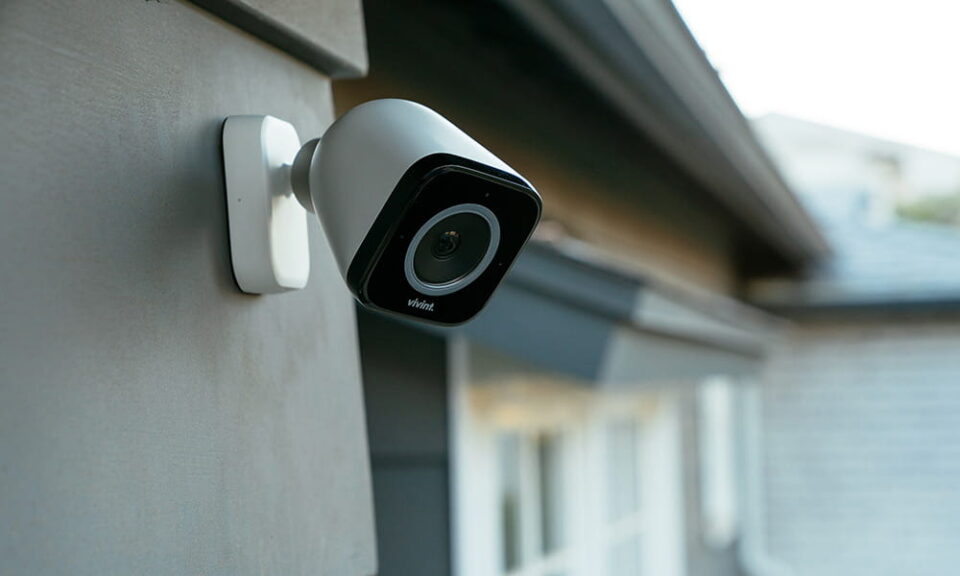Modern security camera systems have revolutionized surveillance, elevating security measures and reshaping cybersecurity protocols. The camera security systems, empowered by AI-driven analytics and encrypted communication, surpass traditional surveillance methods. Beyond bolstering surveillance capabilities, they ensure data integrity, privacy, and resilience against evolving cyber threats. The article explores the transformative impact of modern security camera systems, showcasing how these technologies fortify surveillance while redefining cybersecurity protocols in the digital age.
1. Advanced Video Analytics
Advanced video analytics represents a paradigm shift in modern camera security systems, infusing surveillance with advanced video analytics capabilities. Through intricate algorithms, advanced video analytics enables real-time monitoring, intelligent alerts, and behavioural analysis, transcending conventional security. It empowers systems to detect and track objects, preempt potential threats, and discern behavioural patterns.
Also, beyond security, advanced video analytics in a surveillance system optimizes operations by analyzing crowd density, traffic flow, and queue management. Integrating advanced video analytics into security systems augments surveillance measures, fostering comprehensive security solutions and operational intelligence. The technology marks a transformative stride, enhancing security efficacy and streamlining operations for a safer and more efficient environment.
However, it’s crucial to select reliable manufacturers of camera security systems, adhering to stringent security protocols and compliance standards while avoiding products from prohibited entities. That helps mitigate the risk of cyber threats or data breaches.
2. Advanced Encryption Standards
Modern security cameras integrate advanced encryption standards and represent cutting-edge encryption technologies to protect sensitive surveillance data from cyber threats and unauthorized access. Advanced data encryption ensures data confidentiality by encoding information, making it indecipherable to unauthorized parties. The encryption leverages complex algorithms to secure video streams and stored data, thwarting potential cyber-attacks and safeguarding against unauthorized access.
A trusted security systems integrator plays a crucial role in safeguarding all facets of your security infrastructure, ensuring robust protection across various components, preventing data breaches, and maintaining the integrity of surveillance systems. Their expertise ensures data confidentiality and effectively mitigates risks posed by cyber threats in surveillance technology.
3. Integration with Video Management System
Modern camera security systems often integrate with a unified video management system (VMS) to streamline surveillance operations by providing advanced tools and functionalities. The collaboration allows for centralized control and monitoring of multiple cameras and security devices within a unified platform. The VMS enables efficient management of video feeds, providing functionalities such as live viewing, recording, playback, and analysis. Also, it offers features like remote access, user management, event notifications, and data storage.
Integration with a VMS enhances surveillance capabilities by facilitating easy access to video assets, optimizing storage, and enabling comprehensive control and analysis of the surveillance infrastructure. Robust user management, archiving, and backup features ensure data integrity and compliance, with proactive maintenance monitoring system health.
That facilitates secure access to video assets and real-time event alerts through dedicated workstations and a web client for fixed and mobile devices. An experienced security system integrator has the expertise to orchestrate a flexible system integration that allows for custom add-ons, optimizing video management processes for enhanced surveillance efficiency and informed decision-making.
4. Future-Proofing Cybersecurity Protocols
Advanced security camera systems can deploy adaptable measures that anticipate and adapt to evolving cyber threats. These protocols encompass the integration of deep learning and AI-driven technologies. The surveillance system makes automated decisions based on varying conditions through machine vision systems, thus facilitating automation in surveillance and security.
An experienced security system integrator will incorporate open-source libraries, reliable AI hardware, and high-end thermal imaging infrared cameras to drive this evolution. The advancement aims to automate complex decision-making, enhance product quality, and boost productivity.
These systems also employ neurotechnology while reducing complexity by enhancing on-camera decision-making. The forward-looking approach enables preparedness for emerging cyber risks by embracing adaptable protocols and integrating cutting-edge technologies.
5. Extended Aerial Reach and Rapid Response
Extended aerial reach and rapid response in camera security systems involve leveraging aerial perspectives through drone technology to enhance surveillance capabilities and response times. It enables safe monitoring of high-risk situations from a distance, providing critical situational awareness for officers. An integrated security camera system with HD visible and thermal panoramic capabilities ensures comprehensive monitoring and live streaming of multicast video to the responsible teams.
The approach is crucial in high-risk scenarios, providing an acute and high-resolution “eye in the sky, facilitating prompt decision-making while maintaining a safe distance. A well-designed and holistic aerial surveillance system empowers law enforcement with vital information for real-time assessments and swift responses to critical situations.
6. Excellence in Thermal Imaging
Advanced camera security systems with thermal imaging capabilities can provide clear vision and detection in challenging environments. The technology empowers security professionals by enabling visibility in total darkness, glaring light, smoke, and fogy environments. Thermal imaging offers unparalleled advantages by utilizing infrared and capturing images based on heat rather than visible light.

